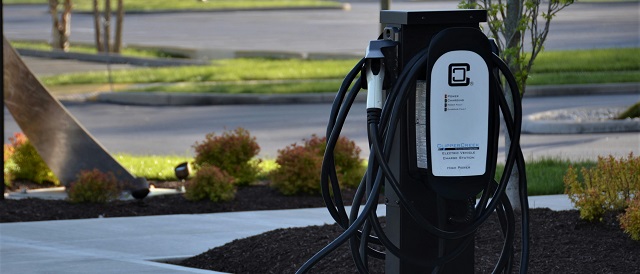Also Interesting
The Role of Immigrants in Canada’s Thriving Manufacturing Industry

The manufacturing sector has developed into a wealth-creating powerhouse, with a diverse workforce within which immigrants are the leading players. The craftsmen or the artisans can be considered as a repository of knowledge, talent, and viewpoints that contribute not only to better workplaces but also to workplaces that are full of sense and purpose. Globalization can be definitely called the new reality of the world. Consequently, this is why migrants play a big role in pushing the Canadian manufacturing sector toward innovation and competitiveness. This reality raises a question: What actions can immigrants take to ensure that this field does not experience detrimental effects as a result of their integration? We interviewed an immigration consultant in Calgary and came to know the problems and new opportunities that an immigrant faces in this area.
In the midst of adjustments in the global trade structure and technological development, the manufacturing industry in Canada has demonstrated great adaptability, with immigrants being the driving force. They are not just the numbers but the figures who fill the gaps, enhance innovations, and make the country competitive in the worldwide competition. This understanding requires that we take a retrospective view of the history of the Canadian manufacturing industry, and examine its present condition and the subtleties of the way immigrants enrich it.
Foundations of Canada’s Manufacturing Sector
The story of Canada’s manufacturing industry is a long, complex, and dynamic one that is marked by change, survival, and innovation. Fundamentally, it has transformed from the time when the sector centered on the regional markets and local basic goods to an integral part of the international trading system.
- Playing a pivotal role in the success of textile mills and food processing plants, establishing the center for future industrial activity.
- A period when manufacturing was decentralized and went through an expansion both locally and internationally driven by the rising demand from the domestic market and export opportunities.
- The manufacturing industry is going through exciting changes as newer technologies, from automation to digital manufacturing, are giving it a new shape.
- The establishment of free trade agreements which use different rules and regulations, allows countries to easily access the global market.
This has not been a standalone process; rather, it has been a process characterized by the interplay of a multitude of factors. This has been advanced by a system of policymaking, research, and workforce development, where immigrants have made an enormous contribution. Their arrival was at the precise moment when the industry was experiencing a key shift, and therefore they brought along new skills and labor force to fully seize the new prospects. This is manifested through the post-war expansion, a period when local labor supply failed to meet the demand, and also the current era characterized by technological advancement where innovation and specialized knowledge are vital, immigrants have been active participants, contributing to the growth of the sector.
Immigrants in the Manufacturing Workforce
The impact of immigrants on Canada’s manufacturing sector is profound and multifaceted. They bring essential skills, fresh perspectives, and a willingness to innovate, which are critical in today’s fast-paced, technology-driven environment.
- Many immigrants possess specialized skills that are in short supply domestically. From advanced manufacturing techniques to expertise in emerging technologies, they help fill vital roles.
- Diverse teams are known to be more innovative, and the multicultural nature of Canada’s immigrant workforce brings different viewpoints and ideas, driving creativity and problem-solving.
- Immigrants often have networks and knowledge of international markets, aiding Canadian manufacturers in expanding their reach and understanding global consumer needs.
Why Immigrants Choose Manufacturing
Manufacturing offers immigrants a pathway to meaningful employment and integration into Canadian society. The sector’s diverse range of opportunities, from production lines to engineering and management positions, appeals to a wide skill set. Additionally, the stability and growth prospects within the industry, coupled with supportive community networks and governmental programs, make manufacturing an attractive option for many newcomers. Programs aimed at skill development and credential recognition further facilitate the integration of immigrants into this sector, ensuring that they not only contribute to Canada’s economic prosperity but also find personal growth and fulfillment.
Overcoming Challenges
While the integration of immigrants into Canada’s manufacturing sector offers numerous benefits, it’s not without its challenges. Language barriers, cultural differences, and the recognition of foreign credentials pose significant hurdles for many newcomers. These challenges can impact an immigrant’s ability to fully participate in the workforce and advance in their careers. However, concerted efforts from various stakeholders, including governments, industry bodies, and community organizations, are making strides in addressing these issues. Through language training programs, workplace integration initiatives, and credential assessment services, immigrants are receiving the support they need to overcome these barriers, ensuring they can contribute their full potential to the manufacturing industry.
Moreover, the manufacturing sector itself is evolving to become more inclusive and accommodating. Companies are increasingly recognizing the value of a diverse workforce and are implementing policies and practices that promote inclusion. This includes creating more culturally sensitive work environments and offering mentorship and support programs specifically designed for immigrant employees. These efforts not only help immigrants to overcome initial challenges but also pave the way for their long-term success and satisfaction in the manufacturing industry.
Support from Government and Industry
Governmental Initiatives
The Canadian government has played a pivotal role in supporting the integration of immigrants into the manufacturing sector. Through various programs and initiatives, it aims to ease the transition for newcomers and help them find employment in their field of expertise. For instance, the Federal Skilled Worker Program targets skilled immigrants, facilitating their entry into Canada based on their ability to contribute to the economy, including the manufacturing sector. Additionally, the government offers language training and credential recognition services, crucial for immigrants to gain employment in their chosen fields.
Industry Support
On the other side, the manufacturing industry itself has taken proactive steps to welcome and integrate immigrant workers. Many companies have established their own training and mentorship programs, designed to bridge any skills gap and acquaint newcomers with the Canadian workplace culture. Industry associations also collaborate with educational institutions to create tailored programs that prepare immigrants for the specific needs of the manufacturing sector. These initiatives not only help immigrants secure employment but also ensure they have the skills and knowledge necessary to excel in their roles.
Embracing Change for a Brighter Future
As Canada’s manufacturing sector continues to grow, so does the need for workers with the skills to meet the sector’s evolving needs. Immigrants, who bring different skills and ideas, are key to addressing this labor shortage. In addition to inclusive cultural practices, both immigrants and employers must continue to improve themselves to ensure successful integration.
Employers and employees in the manufacturing sector should create a culture for training and enhancement of skills. For immigrants, to continuously follow the industry trends and technologies and for employers, to make suitable investments in the ongoing training and professional development programs of their employees. This is more than only a personal career advancement; it is a step towards the growth of the entire sector thus boosting the competitive edge of Canada’s manufacturing industry globally. This passionate zeal for change and adjustment is what will be the key factor in the two – the success of the industry and the widespread workforce.
Also Interesting
The Future of Fault Detection: AI and IoT Innovations in Garage Door Repair

AI and IoT are making big changes to how we fix garage doors. They help find problems faster and better. With AI, we can watch garage doors all the time. IoT lets us see if something is wrong right away. This makes fixing garage doors easier. It also makes customers happier because their problems get solved quickly.
Sometimes, garage doors stop working out of the blue. People don’t know why. But the Predictive Maintenance Market is helping. This market is getting bigger and bigger. By 2029, it could be worth $47.8 billion! This growth is thanks to new IoT tech and ways to understand data. As this market grows, using AI and IoT for garage door repairs gets better. We can find issues before they become big problems. This lets us fix things ahead of time.
This article talks about how AI and IoT change garage door fixes. These new ways help find and fix problems fast. With AI and IoT, garage door repair get simpler and easier. Homeowners can get their garage door issues solved quickly with these
new ways.
AI Spots Garage Door Faults
Artificial intelligence makes it simpler to find issues with garage doors. The systems work all the time, day and night. They look at information constantly to catch problems early. This prevents bigger issues from happening later. Catching
problems early keeps garage doors working well for longer; it also reduces the chance of sudden breakdowns.
Sophisticated learning models drive these smart systems. Over time, the models study lots of data. They learn to recognize patterns that point to future issues. As they take in more information, they get better at spotting potential problems. This
leads to less downtime for repairs. It also helps garage doors run smoothly. With intelligent technology, homeowners feel secure. They know their garage doors are being watched carefully.
IoT for Real-Time Garage Door Monitoring
Moving beyond smart fault finding, IoT monitors garage doors closely. Cameras and motion sensors make this work. These gadgets send alerts to your phone if something odd happens. You stay informed, home or not.
Smart home tech lets you check your garage door anytime. You can see if it’s open or shut and control it remotely. This adds security by enabling quick action if needed. With IoT monitoring your garage door, you can relax knowing all is secure.
Breakthroughs in Fault Detection Technologies
New advances change how we spot garage door issues. Smart sensors and constant IoT tracking enable smarter repairs.
New Sensors Help Fix Garage Doors
Special sensors use computer programs to find issues with garage doors before they become big problems. With these sensors, your garage door can understand how it is working right now. This smart technology makes fixing problems easier.
The sensors also prepare for future issues by looking at data over time. They learn from patterns and predict when a part might break down. This helps avoid unexpected breakdowns, making maintenance easier and saving money in the long run. These sensors bring a new level of accuracy, changing how we take care of our garage doors.
Watching Devices All the Time
Smart gadgets have changed many businesses, like garage door fixing. These gadgets can track how products work and use energy. When gadgets connect to products, they can see how they work and use energy in real-time. This gives useful data to make things better and fix them.
Smart gadgets can quickly spot when things aren’t working right. They can find problems fast so there’s less downtime. Bigger issues are less likely too. By looking at data and tracking where things are, smart gadgets make it easy to manage info from different gadgets. This makes it a way better to find faults and fix things. Problems get found and fixed quickly. In the end, fixing costs less and things work better.

The Benefits of Using AI and IoT for Garage Door Services
New ways to find problems with garage doors are changing how we fix them. Smart sensors and tracking can now watch garage doors all the time. This helps find issues before they get worse. These systems use data and computer programs to
look for patterns. They can see if a garage door is having problems and needs repairs. Finding problems early means unexpected breakdowns are less likely. It also helps plan when a garage door needs maintenance, so it can stay working
smoothly.
Finding Problems Quickly and Accurately
AI and IoT help find problems with garage doors quickly and accurately. AI systems use data from sensors to find errors or potential issues fast. This means garage doors get fixed sooner, often before they break down. Smart technology makes
finding problems accurate and efficient, instead of guessing.
IoT devices monitor garage doors in real-time, so any issue is noticed right away. This automation improves how well systems work by allowing for predictive maintenance through intelligent diagnosis.
Saving Money on Maintenance
Using AI and IoT tools can help reduce costly repairs for garage doors. These tools can find issues before they get worse. This can cut down on unexpected costs and make garage doors last longer. Instead of fixing issues after they happen, this
approach finds and fixes them early on. This helps garage doors work better for longer.
IoT sensors and data analysis help spot issues early. This allows repairs before bigger problems happen. AI and IoT tools make repairs faster, cheaper, and better. They also makes customers happier. Smart sensors let homeowners go longer
without surprise breakdowns. This saves money on emergency repairs.
Enhanced Safety and Security Features
Advanced sensors with AI can quickly detect issues with garage doors. This ensures the doors operate correctly without glitches or errors that could be unsafe. Smart automation creates an extra layer of security too. It makes unauthorized
entries much harder.
These smart solutions allow for better maintenance before problems arise. They can predict errors before they occur, greatly improving security capabilities. You can control and monitor your garage door remotely through a smartphone or other device.
This convenient remote access also enhances safety. You receive alerts about any potential issues right away, preventing serious problems.
Customer Convenience and Service Efficiency
Smart home tech helps garage doors work better for you. AI learns what you like. Then, it gives you ways to open and close your garage doors from anywhere using your phone or voice. You can get into your garage easier this way. Smart tech also
checks if your garage door needs fixing before it breaks. This saves you time and money. Special sensors see if things are in the door’s way so it won’t hit them.
People feel safer at home when the garage door won’t hurt anyone or anything. In conclusion, using smart sensors and technology for garage doors is helpful. Problems are found faster. Repairs happen sooner. This saves money by avoiding
big issues. It also provides safety. Sensors prevent accidents by stopping the door. As technology keeps improving, garage doors will get even smarter. They will work better and be safer. Homes will be more secure with these new innovations. The future looks promising for keeping garage doors in good shape.
Also Interesting
Casino market in Canada grows in 2023 as more states consider legalization of igaming

The year 2023 marked a significant turning point for the Canadian casino industry. Ontario, the country’s most populous province, took a bold step by legalizing and regulating online gambling within its borders. This decision, met with anticipation by both the public and gambling operators, has demonstrably revitalized Ontario’s casino market and sparked discussions about similar moves across Canada.
Prior to 2023, online gambling in Canada existed in a legal grey area. While federal law prohibited the operation of online casinos by domestic entities, Canadians were free to access offshore websites that were offering various virtual slot machines, table games like blackjack or roulette and sports betting. This presented a challenge for regulators. Not only were they unable to capture tax revenue from this activity, but they also lacked control over consumer protection measures and responsible gambling initiatives.
Ontario’s decision to legalize online gambling addressed these concerns head-on. The province established a regulated online gaming market, allowing licensed operators to offer casino games, sports betting, and other forms of online gambling to residents. This move not only provided a safe and secure environment for players but also opened up a new avenue for tax generation.
The impact of Ontario’s online gambling legalization has been undeniable. Since its launch in April 2023, the market has experienced explosive growth. Gross gaming revenue (GGR) from online gambling platforms has surpassed initial projections, with analysts attributing this success to a combination of factors. Firstly, the convenience and accessibility of online gambling have attracted new customers who may not have frequented traditional brick-and-mortar casinos. Secondly, the variety and innovation offered by online platforms – with their extensive game libraries, live dealer experiences, and mobile compatibility – have proven highly appealing to existing gambling enthusiasts.
The economic benefits for Ontario have been substantial. Tax revenue generated from online gambling is already exceeding estimates, providing a significant boost to provincial coffers. These funds are being directed towards various government initiatives, from infrastructure development to social programs. This tangible financial success has not gone unnoticed by other provinces across Canada.
Several provinces, including British Columbia, Alberta, and Manitoba, are actively considering following Ontario’s lead and legalizing online gambling within their own jurisdictions. These provinces are closely monitoring Ontario’s experience, with a keen eye on the regulatory framework, tax revenue generation, and potential social impacts.
Proponents of online gambling legalization argue that the benefits extend beyond just tax revenue. A regulated market allows for stricter controls on advertising, responsible gambling measures, and player protection. Additionally, it fosters competition within the industry, potentially leading to better odds and a wider variety of games for consumers.
Opponents, however, raise concerns about potential increases in problem gambling rates and the social costs associated with it. They argue that the ease of access and anonymity offered by online platforms could exacerbate gambling addiction. Additionally, the potential for increased advertising and marketing associated with a legal online gambling market raises concerns about the normalization of gambling behavior.
Despite these concerns, the success of Ontario’s online gambling legalization has undoubtedly reignited the conversation across Canada. As other provinces weigh the potential benefits and drawbacks, it seems likely that online gambling will become a more prominent feature of the Canadian casino market in the near future. The key will be striking a balance between generating revenue, protecting consumers, and mitigating potential social harms. By learning from Ontario’s experience and implementing a robust regulatory framework, other provinces can pave the way for a safe, responsible, and prosperous online gambling market in Canada.
-

 COVID-192 days ago
COVID-192 days agoJapan’s most senior cancer doctor: COVID shots are ‘essentially murder’
-

 Alberta2 days ago
Alberta2 days agoProvince announces next step to revamped health care system
-

 Automotive1 day ago
Automotive1 day agoGovernments in Canada accelerate EV ‘investments’ as automakers reverse course
-

 COVID-192 days ago
COVID-192 days agoTrudeau government only sought legal advice after Emergencies Act was invoked, records indicate
-

 Automotive1 day ago
Automotive1 day agoRed States Sue California and the Biden Administration to Halt Electric Truck Mandates
-

 COVID-192 days ago
COVID-192 days agoMore victories for freedom as ArriveCAN charges dropped and fines reduced
-

 Economy1 day ago
Economy1 day agoBiden signs suicidal ‘No Coal’ pact, while rest of world builds 1,000 new plants
-

 Alberta1 day ago
Alberta1 day agoPharmacist-led clinics improve access to health care: Lessons from Alberta






